Essential Aquascaping Tools: Scissors, Tweezers, and More – A Usage Guide
Whether you’re a seasoned pro crafting underwater masterpieces or a newbie dipping your toes into this addictive hobby, having the right tools is a game-changer. Walking into a fish store and staring at rows of shiny instruments can feel overwhelming—what do they do, and which ones do you need? Don’t sweat it! In this guide, I’ll break down the must-have aquascaping tools—scissors, tweezers, and beyond—and show you how to use them to build and maintain a stunning planted tank. Let’s get those hands wet and start creating!
- Types of Aquascaping Tools
- What Size Tools Do I Need?
- Best Planted Aquarium Tool Kits
- Frequently Asked Questions
- Conclusion
Types of Aquascaping Tools
Scissors for Trimming Aquarium Plants
Plants are the heart of your aquascape, and keeping them in shape means regular trimming. Slow-growers might need a snip every now and then, but fast-growers—like carpet plants under bright lights—demand frequent attention to stay pristine. The right scissors depend on your tank’s setup and plants. Here’s what to consider:
- Type of plant
- Density and complexity of your aquascape
- Type of cut you wish to make
- Depth of your fish tank
Straight Scissors
Straight scissors are your precision champs for dense tanks. Their sleek design lets you trim without knocking over nearby plants or hardscape. Perfect for vertical cuts on stem plants like Rotala, they also shine for tidying up tall plants in the upper tank levels. Imagine snipping away like a barber—clean, quick, and no mess!
Curved Scissors
 9.8 inch curved scissors in Segarty tool kit #ad
9.8 inch curved scissors in Segarty tool kit #ad
Curved scissors are a must for low-level work—think foreground creepers or background spreaders. Their angled blades make horizontal cuts a breeze without dunking your hand deep into the tank, sparing your plants and hardscape from disturbance. They’re like the Swiss Army knife of trimming—versatile and handy for shaping those tricky spots.
Wave Scissors
Wave scissors are the carpet plant whisperers. Designed with a double-curved edge, they glide parallel to the substrate, perfect for keeping dwarf hair grass (Eleocharis spp.) or glosso (Glossostigma elatinoides) lush and even. You can trim from above, minimizing disruption—like mowing a tiny lawn!
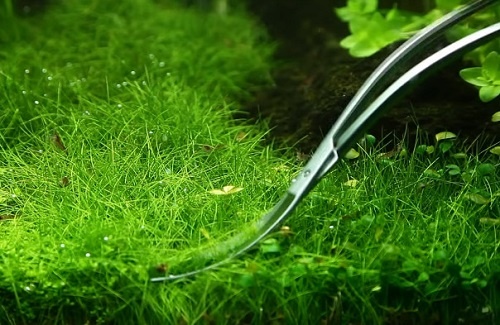
Trimming dwarf hairgrass with wave scissors
Spring Scissors
For delicate detail work—like trimming moss on driftwood—spring scissors are your go-to. Their small size and spring-loaded action make them nimble, avoiding the clumsiness of longer tools. They’re like tiny artist brushes, perfect for sculpting intricate mossy accents.
Tweezers for Planting Aquarium Plants
Planting rooted plants in substrate is an art, and tweezers (or pinsettes) are your paintbrushes. The best pair depends on your task, but here’s what makes a great one:
- Comfortable grip
- Quality stainless construction
- Corrugated inner surface for a firm grip on plants and other objects
- Tips that meet perfectly
Straight Tweezers
 12-inch stainless steel straight tweezers #ad
12-inch stainless steel straight tweezers #ad
Straight tweezers are champs for planting in a quality substrate. Grip grasses like Vallisneria and push them vertically into the substrate—no fuss, no muss. They’re also handy for plucking snails or small debris, making them a multi-tasking hero in your toolkit.
Curved Tweezers
 10.6-inch curved tweezers in a tweezers set #ad
10.6-inch curved tweezers in a tweezers set #ad
For bushy plants like amazon swords (Echinodorus), curved tweezers are a lifesaver. Their offset tips keep your hand clear, letting you plant straight down without stirring up the substrate. It’s like having an extra joint in your fingers—precision without the awkward angles!
Pinsettes
Pinsettes are the precision wizards for tiny plants like dwarf baby tears (Hemianthus callitrichoides) in foreground carpets or tight hardscape nooks. Their fine tips also poke gas pockets out of deep substrates or tuck root tabs into place—delicate work, done right.
Aquascape Cleaning and Maintenance Tools
Substrate Spatula / Flattener
A substrate spatula is your landscaping buddy. It smooths out disturbed substrate after planting, trimming, or water changes—especially fine sands that slump over time. Bonus trick: wave it gently over plants to dust off sand particles without touching them, keeping your aquascape spotless.
Algae Glass Scraper
 Aquarium Scraper Cleaner Brush #ad
Aquarium Scraper Cleaner Brush #ad
Algae control is part of the gig—manage it with a glass scraper. A little algae is natural, but too much can spoil the view or harm your tank. With right lighting, CO2, and fertilizers, healthy plants outcompete algae, but a scraper keeps glass crystal-clear.
Fish Net
 Penn Plax Aquarium Fish Net #ad
Penn Plax Aquarium Fish Net #ad
Trimming clippings often float up—nab them with a fine-mesh fish net. Small and medium sizes work best; loose stuck bits from glass by hand, then scoop. Let the net dry before emptying—it’s a pro tip to avoid a soggy mess!
What Size Tools Do I Need?
Aim for tools 10″ to 15″ long—ideal for most tanks. They keep your hands above the action in deep setups, though a little splash is part of the fun! Trim during water changes when levels are low, and keep hands clean of chemicals. Want to stay dry? Try aquascaping gloves #ad.
Best Planted Aquarium Tool Kits
Bornfeel 7 in 1 Aquascaping Tool Kit

 Check on Amazon #ad
Check on Amazon #ad- Ideal for: general purpose, trimming, planting, and substrate management
- Length: waved scissors- 9.4″, curved scissors-9.8″, straight scissors-10″, curved and straight tweezers-10″, sand spatula- 12.6″
- Material: Stainless steel
The Bornfeel 7-in-1 kit is your all-in-one starter pack—straight and curved tweezers, three scissor types (straight, curved, wave), and a spatula, all in a zip-up bag. Add pinsettes, spring scissors, a net, and a scraper separately for the full arsenal.
Liveek 4 in 1 Aquascaping Tool Kit

 Check on Amazon #ad
Check on Amazon #ad- Ideal for: general purpose, trimming, planting, and substrate management
- Size: straight and curved tweezers-10″, curved scissors- 10.5″, spatula- 12.5″
- Material: coated stainless steel
Liveek’s 4-in-1 kit covers the basics—straight and curved tweezers, curved scissors, and a spatula—in a drawstring pouch. The coated stainless steel resists rust, making it a durable beginner’s choice.
Lukovee 5 in 1 Aquascaping Tool Kit

 Check on Amazon #ad
Check on Amazon #ad- Ideal for: general purpose, trimming, planting, and substrate management
- Length: scissors- 9.8″, straight and curved tweezers- 10.6″, spatula- 12.4″, net-17.7″
- Material: scissors, tweezers, and spatula made from quality stainless steel
Lukovee’s 5-in-1 kit adds a net to the mix—curved scissors, straight and curved tweezers, a spatula, and a bag. It’s great for basic tasks, with the net making cleanup a snap.
Songway 5 in 1 Aquarium Plant Tool Kit

 Check on Amazon #ad
Check on Amazon #ad- Ideal for: general purpose, trimming, planting, and substrate management
- Length: straight scissors and curved scissors – 10″, straight tweezer and curved tweezer – 10.6″, sand spatula 12.4″
- Material: stainless steel
Songway’s 5-in-1 kit packs straight and curved scissors, tweezers, and a spatula into a zip-up case with a tool rack. It’s a solid all-rounder for most aquascaping jobs.
Frequently Asked Questions
How Should I Maintain My Tools?
Dry your tools completely after use—even stainless steel hates rust! Wipe off dirt or plant bits, rinse, and dry before storing to keep them in top shape.
Where Should I Store My Tools?
Keep them dry and safe with your aquarium gear—tool kits often include bags, or grab an aquarium tool holder rack #ad. They’re sharp and shiny, so stash them away from curious kids!
Should I Sharpen My Tools?
Sharp scissors are a must—clean cuts beat tearing plants apart. They arrive ready to go, but sharpen if they dull. Curved blades can be tricky, so consider a pro if you’re unsure.
Is It Safe to Use Other Tools in the Aquarium?
Stick to aquarium-specific tools—household ones might carry chemicals or corrode, risking your fish. Dedicated tools are the safe bet for a healthy tank.
Conclusion
Crafting a gorgeous aquascape takes time, passion, and the right gear. These tools—scissors, tweezers, and more—turn hard work into pure joy. Pick what fits your vision, and watch your underwater world bloom. Happy aquascaping!

 Straight Scissors #ad
Straight Scissors #ad Wave Scissors #ad
Wave Scissors #ad Spring Scissors #ad
Spring Scissors #ad Pinsettes #ad
Pinsettes #ad Substrate spatula #ad
Substrate spatula #ad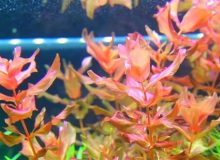
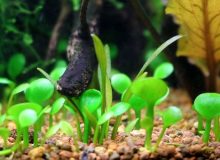
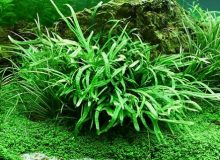
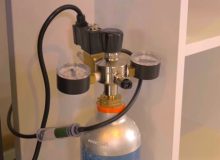
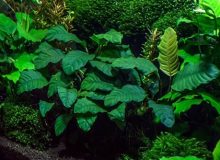
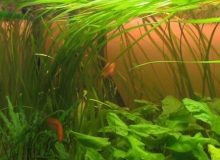
Leave a Reply